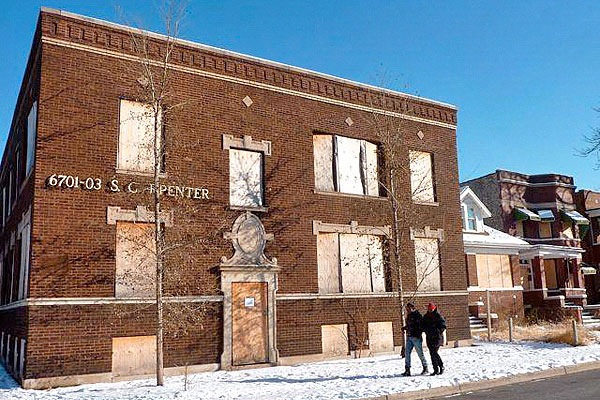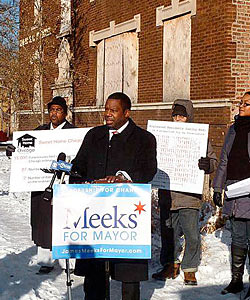
After two years of trying, Chicago’s affordable-housing activists may be just a month away from tapping into the city’s supposedly vast Tax Increment Financing (TIF) funds. Depending on the outcome of work that’s going on now to bridge the gap between two competing ordinances, this could mean between about $50 million to $100 million a year that would go toward buying up foreclosures and rehabbing them into affordable living units.
Led by Alderman Walter Burnett of the 27th Ward, a coalition of nonprofits has been pushing the Sweet Home Chicago ordinance, which would require the city to set aside for affordable housing 20 percent of all the revenue generated by the 158 TIF districts. Burnett and others say that initially the money would be used primarily for foreclosure rehab; later on, the funds would go toward new construction. Sweet Home Chicago and City Hall sponsors of a competing ordinance—which would mandate setting aside10 percent of TIF revenue, while ultimately aiming for a 20 percent return—are now working on a joint proposal to be presented at the City Council’s January 13th meeting.
“We can use TIF funds as a stimulus package for [the city],” Burnett says. “Right now, in this economy, the thing that is clamping down on our city is housing. If we can get these houses cleaned up and back on the market, that stabilizes the neighborhoods. It creates jobs, and it keeps taxes coming in for the city.” He says that a local program would work more quickly than the federal Neighborhood Stabilization Program.

On December 7th, Rev. James Meeks, the state senator and mayoral candidate, endorsed the 20 percent plan. “We cannot stand by and watch the deterioration of our neighborhoods,” he said. “Now is the time to act.”
Standing on the 6700 block of South Carpenter Street in Englewood, Meeks had as backdrop three foreclosed buildings boarded up with plywood. “Let’s get these vacant properties filled with people who need [housing],” said Meeks, who later told me that his own childhood home (nearby, on the 6400 block of South Laflin Street) has at least three boarded-up neighbors. (Meeks has also called for using some TIF funds to bring grocery stores to underserved neighborhoods.)
The foreclosure crisis has had a destabilizing effect on numerous children, says Julia Dworkin, the director of policy for the Chicago Coalition for the Homeless and a member of the group pushing the Sweet Home ordinance. “The number of homeless children in Chicago public schools has increased 40 percent over the past two years,” she says. A large-scale buy-up and cleanup of foreclosures would contribute to the stable futures of those and other children, she suggests.
In his campaign for mayor, Rahm Emanuel has endorsed using TIF money to fill some of the gap in police staffing; others have proposed using TIF funds to help the Chicago Public Schools, and the city already puts some TIF funding toward affordable housing.
But Alderman Burnett believes affordable housing should be a high priority for TIF money. “This is how you have the biggest effect,” he says. “You create construction jobs in the neighborhoods, and you protect the property values of the [neighbors of] foreclosed properties. If somebody has a foreclosed or abandoned building next to their home, they’re worried about vandals, and fires starting, and property values going down. The first thing they ask their alderman is to tear it down. But that brings the [neighbors’] property value and the neighborhood down.”
Instead, Burnett says, “Let’s put people in there.”


